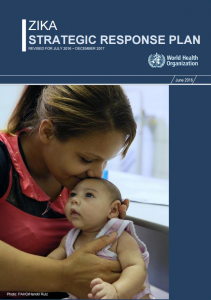
WHO/PAHO and partners have set out the strategic response to Zika, which places a greater focus on preventing and managing medical complications caused by Zika virus infection.
The Strategy also focuses on communicating risks with women of child-bearing age, pregnant women, their partners, households and communities, so that people have the information they need to protect themselves will also be central to the response.
Other elements include integrated vector management, sexual and reproductive health counselling as well as health education and care within the social and legal contexts of each country where Zika virus is being transmitted.
The plan highlights several specific characteristics of the Zika outbreak that require a collaborative, global response and support. These include:
- the potential for further international spread of Zika virus given the wide distribution of Aedes mosquitoes that are capable of transmitting Zika virus,
- the lack of population immunity in areas where Zika virus is circulating for the first time and which allows the disease to spread quickly,
- the absence of vaccines, specific treatments and rapid diagnostic tests, and
- inequalities in access to sanitation, information and health services in affected areas.
The plan provides the basis for coordination and collaboration among WHO and its partners so that countries’ preparedness and response capacities are supported to the fullest extent possible.